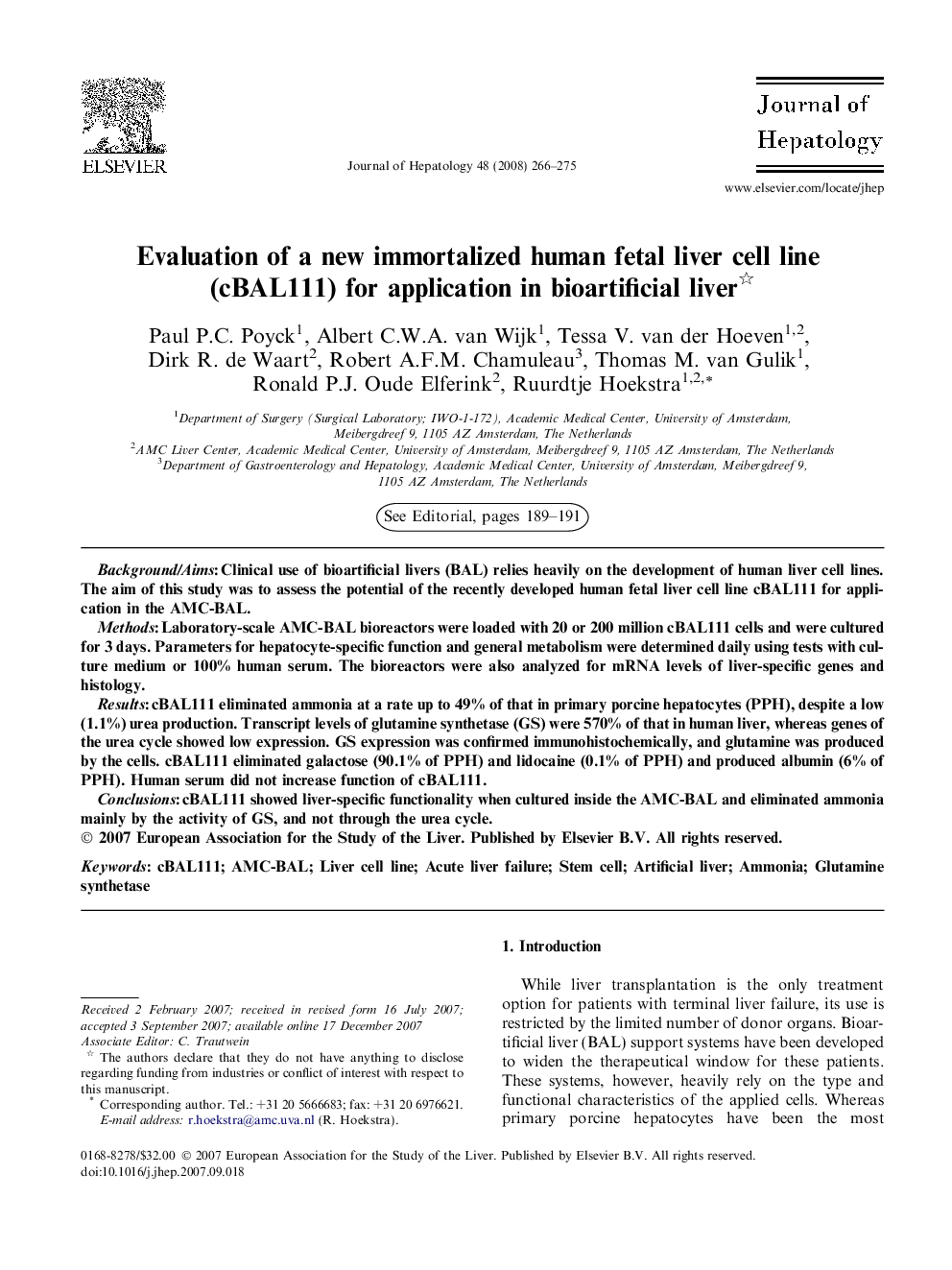| Article ID | Journal | Published Year | Pages | File Type |
|---|---|---|---|---|
| 3315383 | Journal of Hepatology | 2008 | 10 Pages |
Background/AimsClinical use of bioartificial livers (BAL) relies heavily on the development of human liver cell lines. The aim of this study was to assess the potential of the recently developed human fetal liver cell line cBAL111 for application in the AMC-BAL.MethodsLaboratory-scale AMC-BAL bioreactors were loaded with 20 or 200 million cBAL111 cells and were cultured for 3 days. Parameters for hepatocyte-specific function and general metabolism were determined daily using tests with culture medium or 100% human serum. The bioreactors were also analyzed for mRNA levels of liver-specific genes and histology.ResultscBAL111 eliminated ammonia at a rate up to 49% of that in primary porcine hepatocytes (PPH), despite a low (1.1%) urea production. Transcript levels of glutamine synthetase (GS) were 570% of that in human liver, whereas genes of the urea cycle showed low expression. GS expression was confirmed immunohistochemically, and glutamine was produced by the cells. cBAL111 eliminated galactose (90.1% of PPH) and lidocaine (0.1% of PPH) and produced albumin (6% of PPH). Human serum did not increase function of cBAL111.ConclusionscBAL111 showed liver-specific functionality when cultured inside the AMC-BAL and eliminated ammonia mainly by the activity of GS, and not through the urea cycle.
